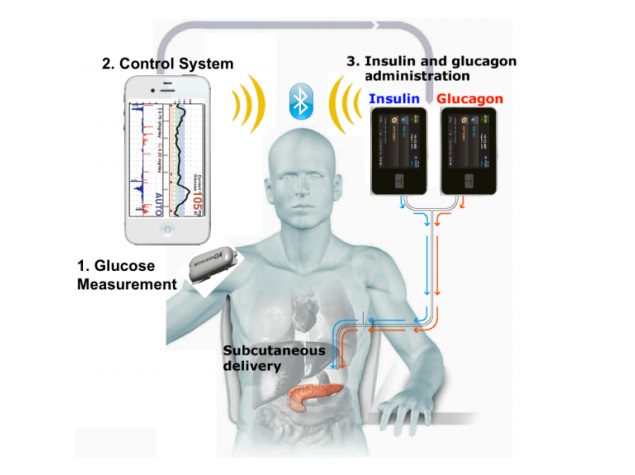- Home
- Science
- Science News
- Modified iPhone Helps Regulate Blood Sugar in Diabetes Patients: Study
Modified iPhone Helps Regulate Blood Sugar in Diabetes Patients: Study

The so-called "bionic pancreas" is the latest in the search to improve the lives of people who have type 1 diabetes, which means their bodies do not produce insulin, a hormone that regulates blood sugar.
Three million people in the United States have type 1 diabetes, which is far less common than type 2 diabetes. It is commonly known as juvenile diabetes because it tends to appear in children and young adults.
People with type 1 diabetes must prick themselves for blood samples multiple times daily in order to monitor their glucose levels, and then either inject insulin or receive it from a pump.
The new method involved an iPhone 4S, which ran a control algorithm for insulin and glucagon, combined with a tiny needle that is inserted under the skin to monitor real-time glucose levels.
A total of 52 adults and youths tried the combination for five days.
The patients using the bionic pancreas had fewer interventions for low blood sugar and showed "significant improvements" in overnight blood glucose levels over what they experienced normally, said the researchers.
"The bionic pancreas system reduced the average blood glucose to levels that have been shown to dramatically reduce the risk of diabetic complications," said researcher Steven Russell, assistant professor of medicine at Massachusetts General Hospital.
"This is tremendously difficult with currently available technology."
More research is needed before the device can be made available for sale, the authors said.
The findings were published Sunday in the New England Journal of Medicine.
Catch the latest from the Consumer Electronics Show on Gadgets 360, at our CES 2026 hub.
- Samsung Galaxy Unpacked 2025
- ChatGPT
- Redmi Note 14 Pro+
- iPhone 16
- Apple Vision Pro
- Oneplus 12
- OnePlus Nord CE 3 Lite 5G
- iPhone 13
- Xiaomi 14 Pro
- Oppo Find N3
- Tecno Spark Go (2023)
- Realme V30
- Best Phones Under 25000
- Samsung Galaxy S24 Series
- Cryptocurrency
- iQoo 12
- Samsung Galaxy S24 Ultra
- Giottus
- Samsung Galaxy Z Flip 5
- Apple 'Scary Fast'
- Housefull 5
- GoPro Hero 12 Black Review
- Invincible Season 2
- JioGlass
- HD Ready TV
- Laptop Under 50000
- Smartwatch Under 10000
- Latest Mobile Phones
- Compare Phones
- OPPO Reno 15 Pro Max
- Honor Win RT
- Honor Win
- Xiaomi 17 Ultra Leica Edition
- Xiaomi 17 Ultra
- Huawei Nova 15
- Huawei Nova 15 Pro
- Huawei Nova 15 Ultra
- Asus ProArt P16
- MacBook Pro 14-inch (M5, 2025)
- OPPO Pad Air 5
- Huawei MatePad 11.5 (2026)
- Xiaomi Watch 5
- Huawei Watch 10th Anniversary Edition
- Acerpure Nitro Z Series 100-inch QLED TV
- Samsung 43 Inch LED Ultra HD (4K) Smart TV (UA43UE81AFULXL)
- Asus ROG Ally
- Nintendo Switch Lite
- Haier 1.6 Ton 5 Star Inverter Split AC (HSU19G-MZAID5BN-INV)
- Haier 1.6 Ton 5 Star Inverter Split AC (HSU19G-MZAIM5BN-INV)












